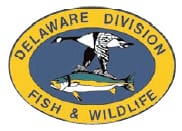What You Should Know If You Find A Seemingly Abandoned Fawn


Delaware –-(Ammoland.com)- The end of May marks the beginning of the fawning season in Delaware, with most born during the last week of May through the first week of June.
Some fawns will be born as late as August. Each year around this time, the DNREC Division of Fish and Wildlife receives numerous calls regarding “abandoned fawns.” In an attempt to “do the right thing” individuals may attempt to “save” these animals and bring them to a wildlife rehabilitator.
“There are a number of things people who remove fawns from the field may not realize. Fawns actually don’t become active enough to start traveling with their mothers until they are about two months old, and the survival instinct of a fawn is to stay very still and “hide” from predators,” said DNREC Wildlife Biologist Joe Rogerson. “Also, even if a fawn appears to be alone, the mother is likely bedded close by. Newborn fawns need to feed every few hours so the doe never strays far.”
Furthermore, research has shown that many fawns cared for by people have a greatly decreased chance of survival once they are released back into the wild, compared to their counterparts raised by their mothers. Fawns raised in the wild are able to learn survival instincts from their mothers that people simply can’t teach them.
Not only is removing a fawn from its hiding place not in its best interest, it is also illegal for an individual in Delaware to possess a live white-tailed deer. If found guilty, such an offense is punishable by a fine not less than $250, nor more than $1,000, plus the costs of prosecution and court costs; the person may also be fined and imprisoned for up to 30 days. In addition, any deer held illegally in captivity will be removed by the Division.
“The bottom line is, if you really care about the fawn and its well-being, please leave the animal alone. Its mother will return and the animal will have a far greater chance at survival than if you take it home,” Rogerson added.
For more information about fawns or white-tailed deer in general, please contact Ken Reynolds, Rob Hossler or Joe Rogerson, Wildlife Section, at 302-735-3600.
